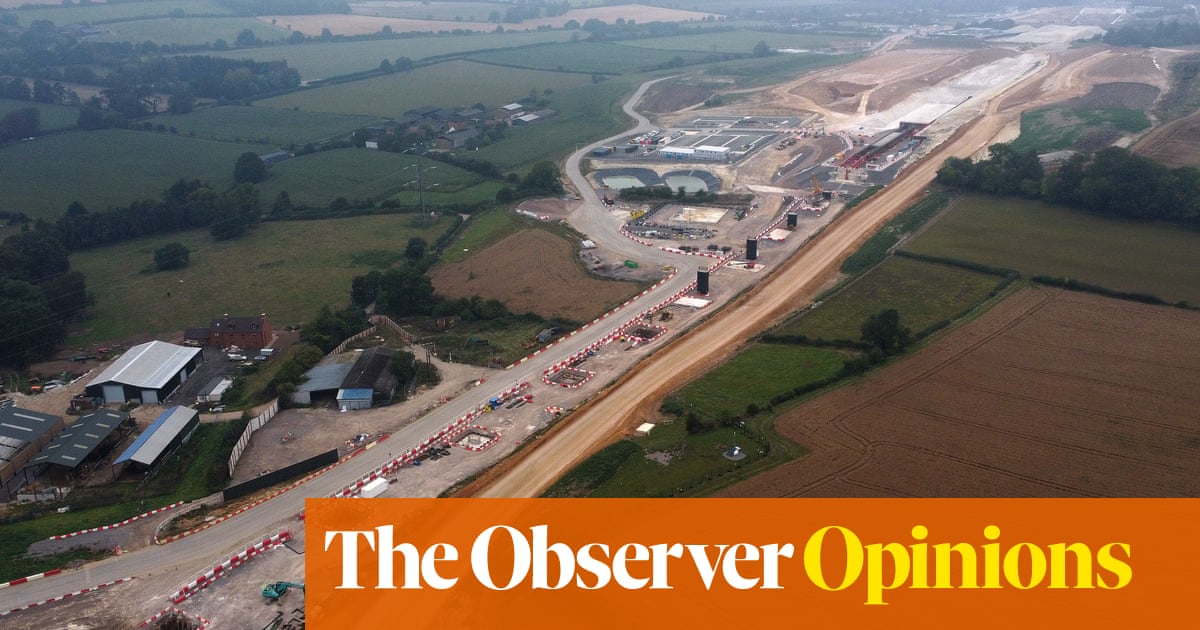
Sources connected to the now-truncated HS2 project tell me of the insane difficulty, expense and delay of building an underground electricity supply to one section of the line. The cost of feasibility work went from £3.5m to £12m, as 18 options were explored for achieving this mundane task. The preferred one proved unacceptably hazardous to some canal bridges under which it would pass. The next foundered when a landowner demanded £2.8m for permission for the supply to cross their property, to which HS2 objected, only to see the figure raised to £7m by an independent valuer. The option eventually chosen started construction earlier this year, three years behind schedule, at several times the original intended cost.
It’s hardly surprising, then, that the project as a whole proved expensive. At the root of the problem is the High Speed Rail Act of 2017, which places an overwhelming obligation for permissions and consents on contractors, which in turn reflects the fact that barrelling a huge railway through scenic, prosperous and Conservative-voting parts of the home counties was always going to be complicated. Sunak’s cancellation was pointlessly destructive, but at least it gives pause for thought: perhaps this densely populated country, with its well-guarded natural beauties, is no longer the place it was when Brunel and Stephenson drove great railways across the landscape.
We might perhaps turn our genius to designing a future beyond heavy engineering, that pays more attention for example to improving people’s lives in the places where they live. Maybe things like buses, local trains and broadband that work well – boring, but more useful, and less environmentally damaging.
Towering waste
I appreciate the demand of the Royal Borough of Greenwich for the “complete demolition” of a 23-storey development called Mast Quay, “and the restoration of the land to its former condition”, on account of 26 “major deviations” from its planning consent. These include the failure to provide gardens, play areas, wheelchair access and underground car parking as promised, as well as shrunken balconies and a significant cheapening of its external appearance. It’s good to see a local authority stand up to the greed and arrogance of a property company. To demolish an entire brand-new building, though, seems extraordinarily wasteful and environmentally reckless. Could the developers not pay a colossal fine instead, equivalent to the cost of demolition and reconstruction, to be spent on affordable housing? Or donate all or some of the buildings’ flats for the same purpose, while also paying for the missing gardens and play areas? If planning law doesn’t allow for such actions, it should be changed.
Making light of history
It’s an under-recognised fact of architectural history that, much of the time, builders in the past were aiming for the biggest, brightest, most colourful and impactful structures they could achieve. It’s only the effect of time, and the disappearance of paint and decorations, that make us think of the past as mostly grey and brown. Georgian Illuminations, an exhibition at Sir John Soane’s Museum in London, shows how the supposedly sober architects of the 18th century liked to dress up buildings like the Bank of England with expensively dazzling lighting effects, using the then up-to-date technology of whale oil lamps. In which case we might embrace the Sphere, the recently opened Las Vegas venue whose internal and external surfaces consist of vast curved digital screens. There’s a proposed London version that may well have unacceptable impacts on nearby homes, but the thing itself just takes those Georgian lights to their next step.












